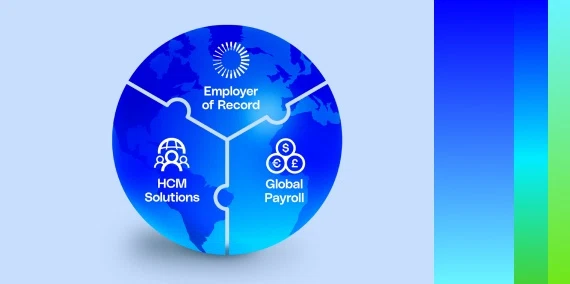Although 98% of executives plan to expand their global presence in the next 12 months, finding skilled talent continues to be an issue for companies of all sizes. And this has been a problem for a while. In 2023 and 2024, over 40% of executives struggled to find the right people for the job in their domestic markets.
But in today’s global economy, enterprises no longer need to limit themselves to hiring locally. To stay competitive and innovative, companies can look beyond borders for skilled professionals. Drawing on our 13+ years of global employment experience and data from our proprietary knowledge base that powers G-P Gia™, our first AI-based HR compliance advisor, let’s examine the top 10 countries where enterprises are finding the talent they need.
Where are global enterprises hiring?
Australia
Australia’s location in Asia-Pacific gives businesses easy access to major markets like China, India, Singapore, and Japan. Australia also has a highly skilled workforce and a growing tech scene for enterprises to tap into. A CSIRO report revealed that there are 96 tech hubs spread across the country, highlighting the quality and availability of talent.
G-P’s internal data estimates that the total annual employer burden rate for Australia can be up to 19.4%.The employer burden rate represents the total cost of employment beyond wages, factoring in mandatory contributions (like health insurance and pension schemes) and supplemental benefits.
In Australia, most professionals who earn less than the maximum threshold, currently at AU 175,000 per year (as of July 1, 2024), are covered under one of the Australian Modern Awards. These outline basic terms of employment — such as pay, work hours, rosters, breaks — in addition to the National Employment Standards (NES).
Learn more about hiring in Australia.
Canada
Canada’s location makes it a perfect choice for companies to establish back offices that support North American operations and future expansion. Out of the nation’s major cities, Toronto leads North America in tech job growth. And Montreal offers one of the most competitive operating costs in the region.
Recently, G-P helped global multi-energy company Repsol retain talented Canada-based employees after closing their local entity. This shows the value of Canada’s workforce and the importance of retaining skilled talent for success.
When hiring in Canada, it’s important to understand social charges. These include employment insurance (EI), Canada Pension Plan (CPP), and worker’s compensation. Enterprises should keep in mind that these contributions vary by province. The total annual employer burden rate can be up to 15.4%.
Learn more about hiring in Canada.
France
France, Europe’s second-largest economy, is quickly developing an excellent technology reputation. Paris has been labeled a “European tech haven,” and according to data from Accel and Dealroom, France-based AI companies have raised USD 2.29 billion, the most in Europe.
France has one of the most complex employment law systems in Europe. Employers are required to make several social security contributions such as health, maternity, disability, old-age insurance, and supplementary pensions, impacting the cost of hiring in France. The total annual employer burden rate can be up to 54.2%.
Learn more about hiring in France.
Germany
Germany is Europe’s largest economy. Its central location provides easy access to neighboring markets. The country ranked best in the Infrastructure Index thanks to its financial stability and business-friendly environment. According to the Global Remote Work Index 2023, Germany has the world’s most affordable internet service — a plus for enterprises building remote teams. G-P recently helped Kraft Sports + Entertainment (KSE) hire a representative in Germany to connect with the local fan base and further expand the New England Patriots brand.
When hiring in Germany, enterprises should be aware that social contributions are based on the professional’s salary. The total annual employer burden rate can be up to 25.9%.
Learn more about hiring in Germany.
India
India has a large pool of skilled tech workers, accountants, researchers, data analysts, and other back-office staff. According to CXOToday, an estimated 60 to 90 million local workers will be working remotely by 2025. English is widely spoken and taught early in schools, making communication easy for global companies.
Social charges include contributions to the Employee Provident Fund (EPF), gratuity, statutory bonus, and Employee State Insurance Corporation (ESIC). For the EPF, the employee and employer contribute 12% of the salary, or a minimum of INR 1800 monthly. The total annual employer burden rate can be up to 4.5%.
Learn more about hiring in India.
Mexico
Mexico has emerged as a prominent tech hub. Mexico City is the largest market for digital talent in Latin America. Other regions contributing to the country’s tech revolution include Guadalajara (electronics and software development), Querétaro (aerospace tech and data centers), and Puebla (automotive tech and IoT development). G-P recently provided valuable support to aerospace company Avionica to onboard and manage its global team in Mexico.
Employer contributions in Mexico include costs for sickness and maternity, disability insurance, social security contributions (retirement, discharge, and old age), and housing funds (INFONAVIT). Payroll tax is location-dependent. The total annual employer burden rate can be up to 35.4%.
Learn more about hiring in Mexico.
Singapore
Singapore is a leading financial hub in Asia, supported by a well-educated workforce. The city’s infrastructure and economy make it an appealing business spot. A Morgan McKinley survey found that 89% of respondents in Singapore express a strong preference for remote work.
For local residents and Singapore permanent residents (SPRs), employees and employers make monthly Central Provident Fund (CPF) contributions. CPF contributions are payable on basic salary, overtime pay, incentives, allowances, bonuses, and commission. The total annual employer burden rate can be up to 21%.
Learn more about hiring in Singapore.
Spain
Spain has a highly educated, multilingual talent pool. Spain ranks third in the EU in number of scientists and engineers, according to Eurostat. Barcelona is the fifth most digitized city in Europe, making Spain an excellent option for global companies looking to establish a European base.
Employee contributions are 6.47% of the salary, up to a cap of EUR 4,720.50 per month. The total annual employer burden rate can be up to 38.9%.
Learn more about hiring in Spain.
UK
The UK has four of the world’s top 10 universities. It is also the work-from-home capital of Europe. With strong trade relationships with many countries, the UK is a great base for companies to manage their operations from. G-P recently streamlined the hiring and onboarding process in the UK for Aurora Expeditions, an Australian-based expedition company.
The total annual employer burden rate can be up to 21.8%, but this number can vary depending on salary caps and changes in local legislation.
Learn more about hiring in the UK.
U.S.
The U.S. is a global leader in innovation and technology. Nearly one in four professionals in the U.S. works in a STEM (science, technology, engineering, and mathematics) field. This attracts companies seeking to hire talent in these fields. In fact, G-P recently enabled ProtoPie, a leading South Korean prototyping software company, to expand their teams in the U.S.
In the U.S., social charges vary by state. They can include state taxes, federal taxes, social security contributions, Medicare, Federal Unemployment Tax Act (FUTA), state unemployment insurance (SUI), and state disability insurance (STI). Locality or city tax may also be applicable. The total annual employer burden rate can be up to 17.2%.
Learn more about hiring in the U.S.

Total Annual Employer Burden Rate by Country
- France: Up to 54.2%
- Spain: Up to 38.9%
- Mexico: Up to 35.4%
- Germany: Up to 25.9%
- UK: Up to 21.8%
- Singapore: Up to 21%
- Australia: Up to 19.4%
- U.S.: Up to 17.2%
- Canada: Up to 15.4%
- India: Up to 4.5%

How G-P can help enterprises access skilled talent
Work is no longer a place we go. Now, great work can be done anywhere. G-P offers a wide range of global employment solutions to help companies hire, onboard, and manage global teams in 180+ countries, regardless of entity status.
Our industry-leading G-P Suite includes products like Employer of Record, Contractor, and Advisor that simplify the entire global employment lifecycle. All our solutions are backed by in-country HR, legal, and compliance experts, along with tools like our Employer Burden Calculator to help companies assess the full cost of hiring in target locations. On top of that, G-P Gia stays up to date on changing employment laws and provides instant answers to all your toughest HR questions in over 50 countries and all 50 U.S. states.
If you’re ready to take your business global, book a demo today.
*Disclaimer: The employer burden rates listed in this blog post are provided for informational purposes only and do not constitute payroll advice. They are estimates as of 2024 and may vary due to changes in local legislation and other variables.










